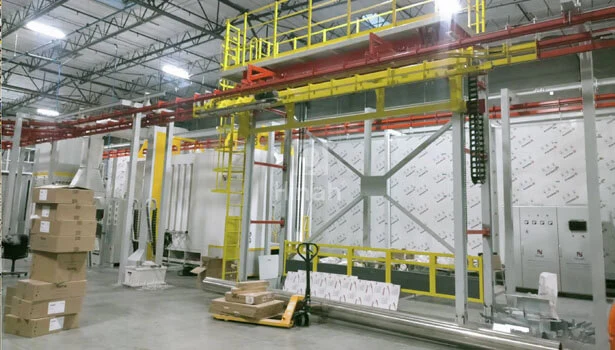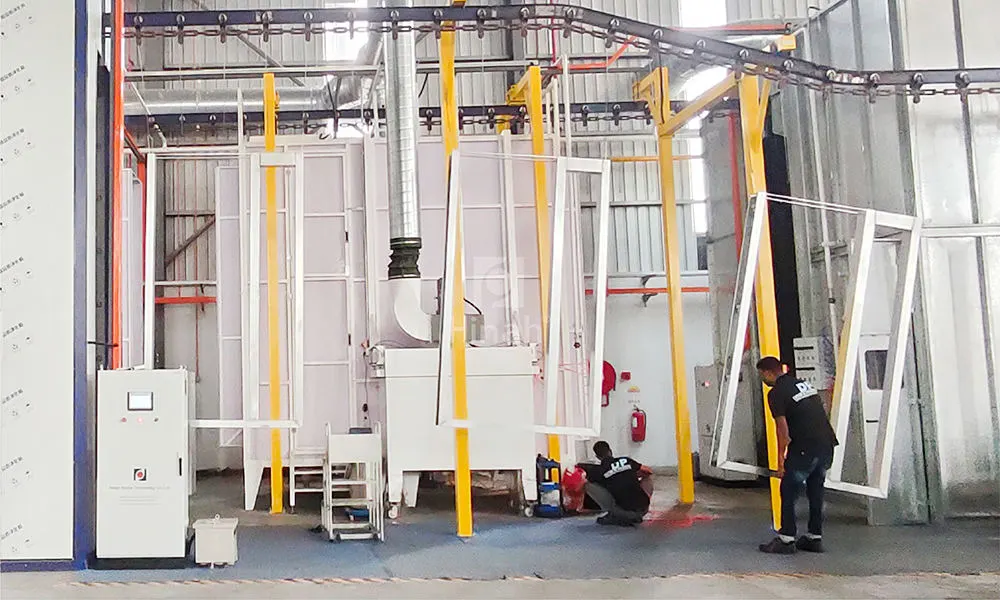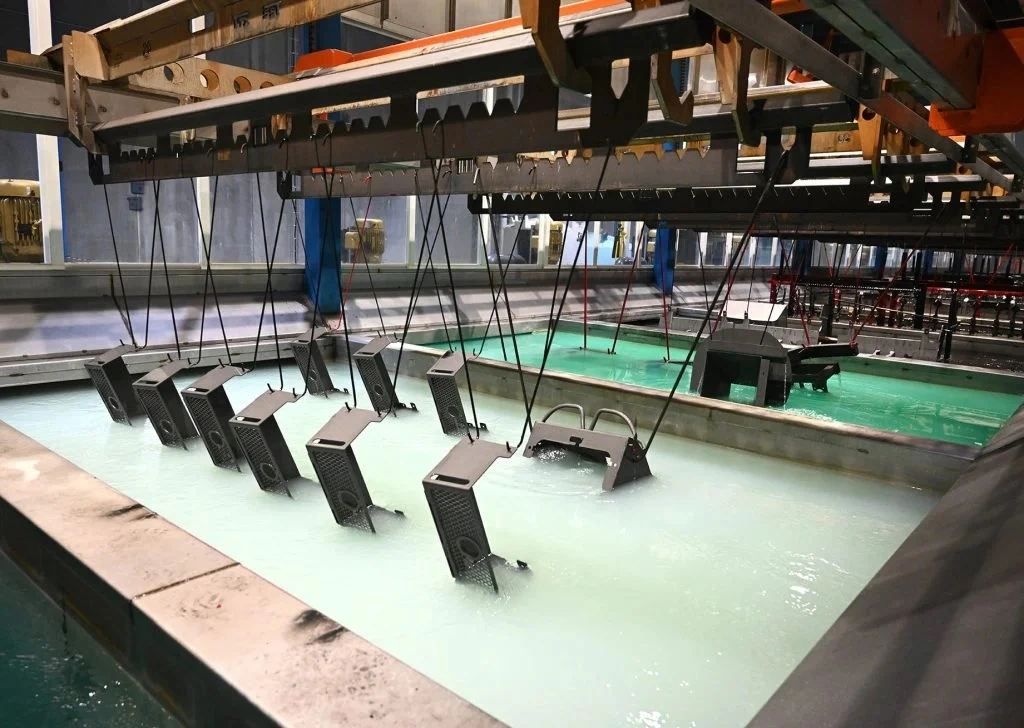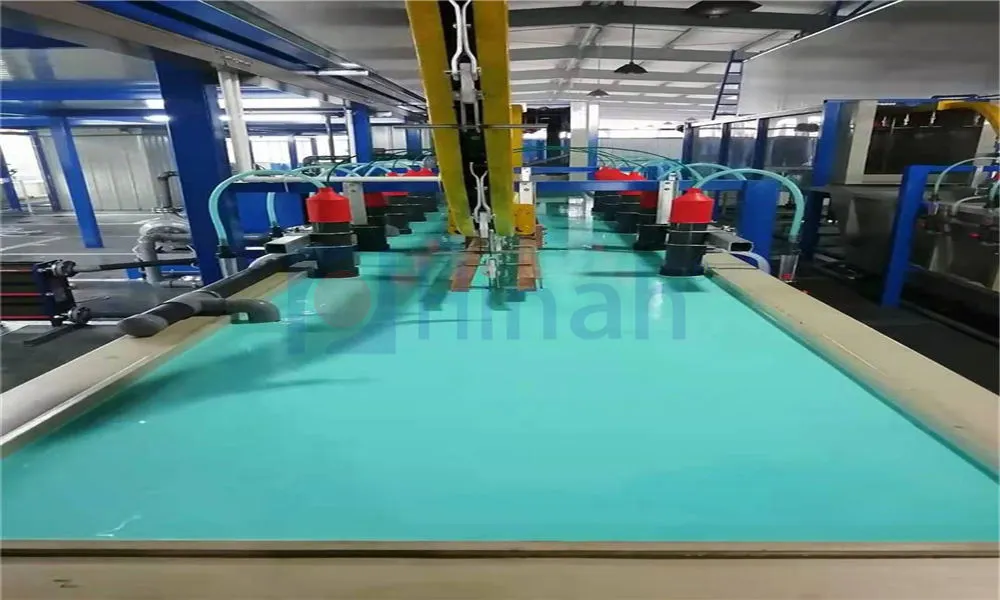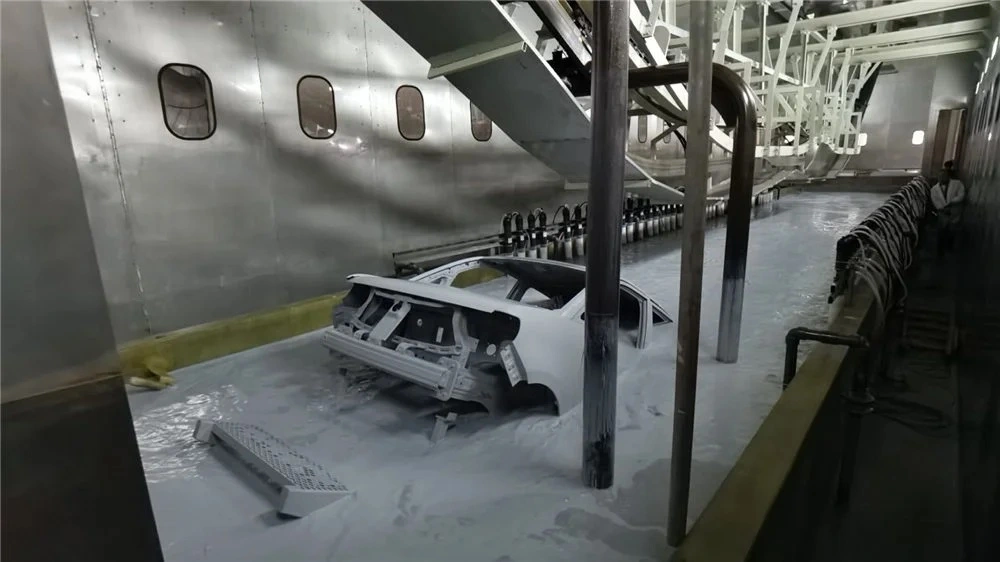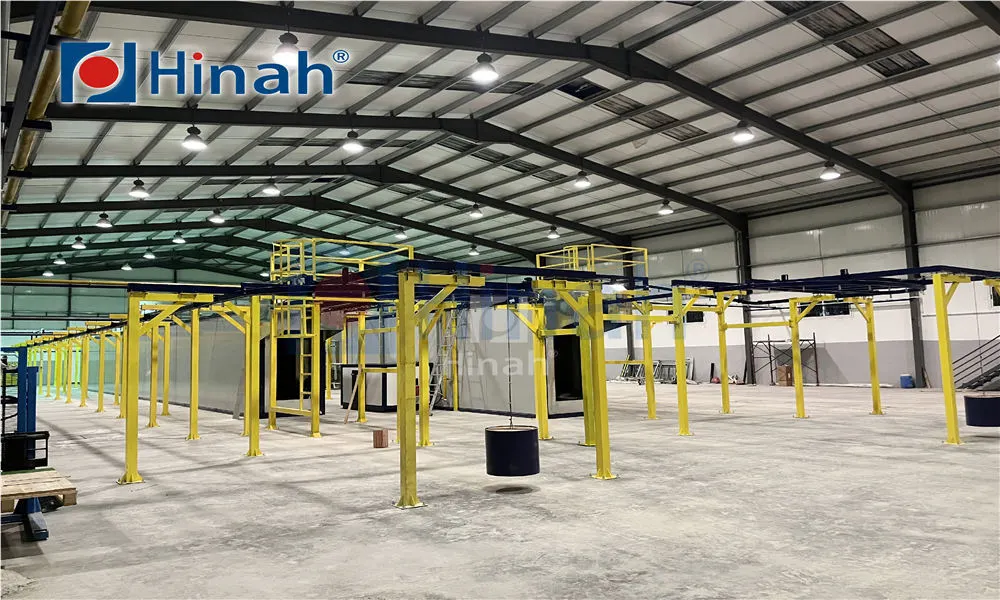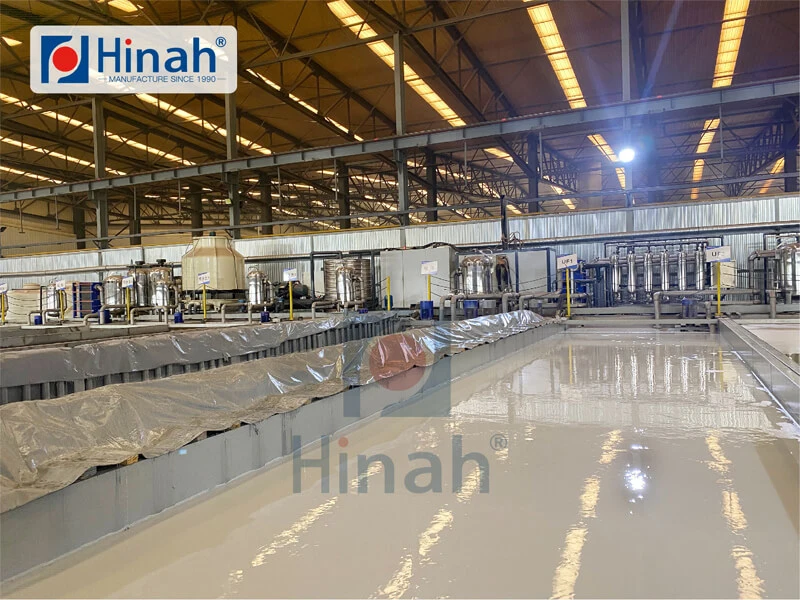The demand for durable, high-quality, and environmentally friendly finishes continues to surge across industries, from automotive and aerospace to furniture and architectural applications. Meeting this demand efficiently hinges on the capabilities of a well-designed powder coating plant. Unlike simple application setups, a full-scale powder coating plant is a sophisticated, integrated system where each component plays a critical role in achieving consistent, defect-free results at optimal production rates. Understanding the core elements of a powder coating plant is crucial for anyone considering installation, optimization, or operation. This article delves deep into the seven essential components that define a modern, efficient powder coating plant.

1. The Pre-Treatment System: The Critical Foundation for Adhesion
No powder coating plant can succeed without a robust pre-treatment system. This stage is arguably the most vital, as it prepares the substrate (metal, typically) for optimal powder adhesion and long-term corrosion resistance. A poorly pre-treated part will inevitably lead to coating failure, regardless of the quality of powder or application.
Process Stages: A comprehensive pre-treatment line typically involves multiple stages:
Cleaning: Alkaline or acidic cleaners remove oils, greases, drawing compounds, and shop dirt. This is often done via spray washers or immersion tanks.
Rinsing: Multiple rinse stages (often including deionized water rinses) ensure all cleaning chemicals are thoroughly removed to prevent contamination.
Conversion Coating: This chemical reaction creates a microcrystalline layer on the metal surface. Common types include:
Iron Phosphate: Cost-effective for indoor applications or light duty.
Zinc Phosphate: Offers superior corrosion resistance, common for automotive and demanding environments.
Chromium-free (e.g., Zirconium/Titanium): Increasingly popular due to environmental regulations and excellent performance.
Final Rinse & Sealing: Another rinse, often with a demineralized water "sealing" rinse to enhance the conversion coating and prevent flash rusting.
Importance: Proper pre-treatment ensures the powder coating bonds chemically and mechanically to the metal, significantly enhancing durability, corrosion resistance, and overall finish quality. Neglecting this stage in a powder coating plant is a recipe for costly rework and premature failures.
2. The Powder Application Booth: Containing and Controlling Overspray
The heart of the application process within a powder coating plant is the application booth. This enclosed environment is designed for operator safety, efficient powder application, and maximum material recovery.
Design & Function:
Containment: Prevents overspray powder from escaping into the wider plant environment, protecting operators and other equipment.
Airflow Control: Uses precisely engineered downward or cross-draft airflow (laminar flow) to carry overspray away from the part and operator towards the recovery system. Maintaining clean, consistent airflow is paramount for application quality.
Operator Safety: Incorporates features like proper lighting, ergonomic access, and explosion-proof components (due to the potential for combustible powder-air mixtures).
Material: Constructed from non-porous, easy-to-clean materials like stainless steel or specialized plastics to prevent powder buildup and cross-contamination.
Types:
Open Face Booths: Simpler design, often used for manual spraying or lower volume operations.
Walk-In Booths: Provide ample space for operators to move around larger parts.
Automatic Booths: Integrated with robotic applicators for high-volume, consistent application.
Integration: The booth is intrinsically linked to the powder recovery system, feeding overspray efficiently for collection and potential reuse.
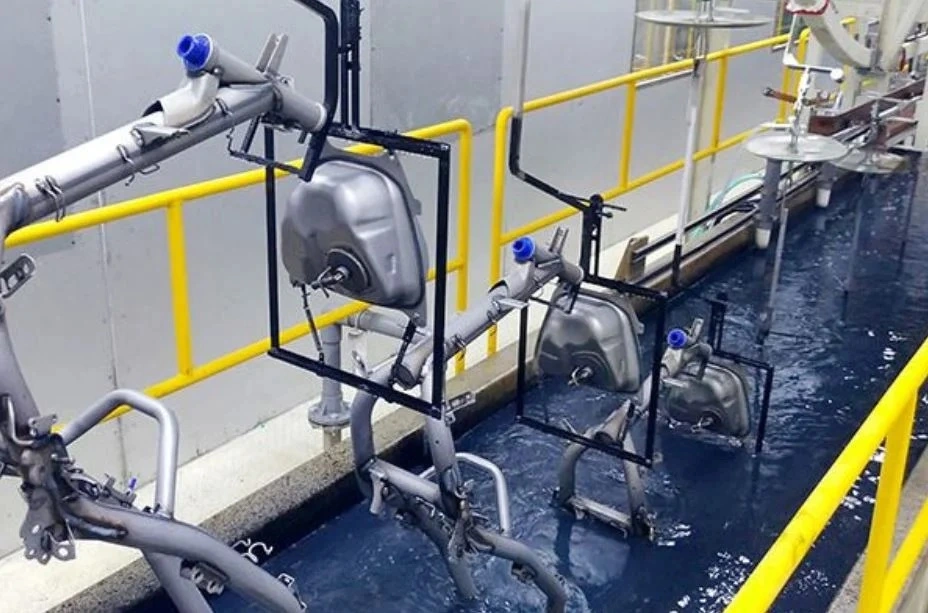
3. The Powder Recovery System: Maximizing Efficiency & Minimizing Waste
A key economic and environmental advantage of a modern powder coating plant is its ability to recover and reuse overspray powder. The recovery system is essential for achieving high transfer efficiency (the percentage of powder that actually adheres to the part).
Components & Process:
Primary Separation: Overspray powder-laden air from the booth enters the recovery unit. Cyclone separators or primary filter cartridges remove the bulk of the powder from the airstream.
Final Filtration: Secondary filters (often high-efficiency cartridge filters or bag houses) capture finer powder particles, ensuring clean air is exhausted back into the plant or outside (meeting environmental standards).
Collection & Sieving: Recovered powder is collected in hoppers. Before reuse, it typically passes through an automatic or manual sieve to break up agglomerations and remove contaminants, ensuring consistent application quality.
Ventilation: A powerful blower maintains the critical airflow through the entire system – booth, ducting, and filters.
Benefits: Effective recovery drastically reduces powder consumption (often achieving >95% utilization rates), lowers material costs, minimizes hazardous waste disposal, and contributes to the overall sustainability profile of the powder coating plant.
4. The Curing Oven: Transforming Powder into a Durable Finish
The curing oven is where the magic of thermosetting happens. This stage transforms the applied powder layer from a loose coating into a continuous, durable, and chemically resistant film.
Curing Process: Powder coatings require specific time and temperature profiles (typically 180°C - 200°C / 356°F - 392°F for 10-20 minutes, depending on the powder and substrate) to initiate a cross-linking chemical reaction (cure).
Oven Types:
Convection Ovens: The most common type in a powder coating plant. Heated air is circulated around the parts by powerful fans, ensuring even heat distribution. Can be direct-fired (combustion gases mix with air) or indirect-fired (heat exchanger separates combustion gases).
Infrared (IR) Ovens: Use electromagnetic radiation to heat the powder and substrate directly. Offer very fast ramp-up times and energy efficiency for thin-gauge metals but can struggle with complex shapes or heavy parts. Often used in combination with convection (hybrid ovens).
Combination (Hybrid) Ovens: Utilize IR for rapid initial heating and convection to ensure complete cure throughout the part, especially effective for complex geometries.
Critical Design Factors:
Temperature Uniformity: Must be tightly controlled (±5°C or better) across the entire oven workspace to prevent under-cure (poor properties) or over-cure (brittleness, discoloration).
Airflow: Ensures consistent heat transfer to all parts.
Insulation: Minimizes heat loss and energy consumption.
Control System: Precise monitoring and control of temperature profiles and conveyor speed (for conveyorized lines) are essential for consistent quality.
Efficiency: Modern ovens incorporate heat recovery systems and advanced burner controls to minimize the significant energy consumption inherent in this stage of a powder coating plant.
5. Material Handling & Conveyor System: The Production Backbone
The seamless movement of parts through every stage – pre-treatment, drying, application, curing, and cooling – is the responsibility of the material handling system. It dictates the throughput, labor requirements, and overall efficiency of the powder coating plant.
Types of Systems:
Overhead Conveyors (Power & Free or Continuous): The most common in high-volume plants. Parts are hung on hooks or fixtures attached to a motorized chain running on an overhead track. Offers high automation and flexibility in routing.
Monorail Conveyors: Similar to overhead but typically a single track, suitable for simpler lines.
Floor Conveyors (Chain-on-edge, Belt, Roller): Used for heavier items, panels, or parts that cannot be hung.
Manual Handling (Trolleys, Carts): Used in smaller job shops or for very large, infrequent parts. Least efficient but lowest initial cost.
Fixturing: Custom racks, hooks, baskets, or frames are essential to hold parts securely, ensure proper grounding for electrostatic application, allow complete coverage (minimizing shadowing), and facilitate drainage during pre-treatment. Fixture design is critical for optimizing the powder coating plant's efficiency and finish quality.
Integration: The conveyor system must be precisely synchronized with application equipment (e.g., reciprocators, robots), oven dwell times, and transfer points between different zones (e.g., wet pre-treatment to dry-off oven).
6. Powder Application Equipment: Precision Delivery
The equipment used to apply the powder is fundamental to achieving the desired film thickness, appearance, and coverage. Modern powder coating plants utilize a range of technologies:
Powder Spray Guns:
Corona Charging: The most common method. A high-voltage electrode creates a corona discharge, imparting a negative charge to the powder particles as they exit the gun. The grounded part attracts the charged powder.
Tribo (Tribostatic) Charging: Powder particles acquire a positive charge through friction inside a specially designed gun barrel (no high voltage at the gun head). Excellent for coating inside corners and complex parts ("Faraday cage" effect) and reduces back-ionization.
Control Systems: Modern guns feature precise control over powder flow, air pattern (fan shaping), and charge levels, allowing operators to fine-tune application for different parts and powders.
Automation:
Reciprocators: Automatically move manual guns up and down, providing more consistent application than a stationary operator.
Robotic Arms: Offer the highest level of precision, repeatability, and speed. Programmable robots can handle complex part geometries and multiple colors (with automatic gun/changer cleaning). Essential for high-volume production in an advanced powder coating plant.
Powder Feed System: Consists of pumps, hoses, and controllers that reliably deliver powder from the storage hopper or feed center to the spray gun(s) at the correct rate and consistency.
7. Control, Monitoring & Environmental Systems: Ensuring Quality & Compliance
The brain and the conscience of a modern powder coating plant lie in its integrated control systems and environmental management.
Process Control & Monitoring:
Centralized SCADA Systems: Supervisory Control and Data Acquisition systems integrate monitoring and control of ovens (temperature profiles), conveyors (speed, position), pre-treatment (chemical concentration, temperature, spray pressure), application parameters, and recovery systems. Provide real-time data, alarms, and historical logging for traceability and quality assurance.
Powder Management: Systems track powder usage, color changes, and sieve status.
Quality Control: Integrated systems may include automatic film thickness gauges or vision systems.
Environmental Compliance:
Air Emissions: The recovery system's final filtration ensures exhaust air meets particulate matter (PM) regulations. Oven exhaust may require thermal oxidizers or other treatment for VOC compliance, depending on local regulations and the specific powders used (though powder coatings are inherently low-VOC).
Waste Management: Systems handle spent pre-treatment chemicals (often requiring pH adjustment and heavy metal removal before discharge to sewer or off-site treatment) and non-reusable powder waste (filter socks, sludge from pre-treatment) as hazardous or industrial waste.
Energy Management: Monitoring and optimizing energy consumption of ovens, air compressors, and ventilation systems is critical for operational cost control and sustainability.
Safety Systems: Include gas detection (ovens), fire suppression, emergency stops, grounding verification, and interlocks throughout the powder coating plant.
A modern powder coating plant is far more than just a spray booth and an oven. It's a complex, interconnected ecosystem where pre-treatment, application, recovery, curing, material handling, and sophisticated control systems work in precise harmony. Each of the seven components outlined above is critical to achieving the core benefits of powder coating: exceptional durability, superior aesthetics, high efficiency through material reuse, environmental advantages over liquid coatings, and consistent, high-volume production capability.
Investing in a well-designed and properly integrated powder coating plant pays significant dividends. It minimizes operational costs through powder savings and reduced waste disposal, maximizes throughput and quality consistency, ensures compliance with increasingly stringent environmental and safety regulations, and ultimately provides a competitive edge by delivering superior finished products. Whether setting up a new facility or upgrading an existing line, understanding and optimizing each of these essential components is key to unlocking the full potential of powder coating technology.




